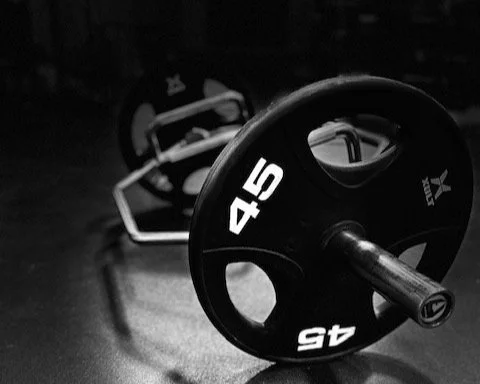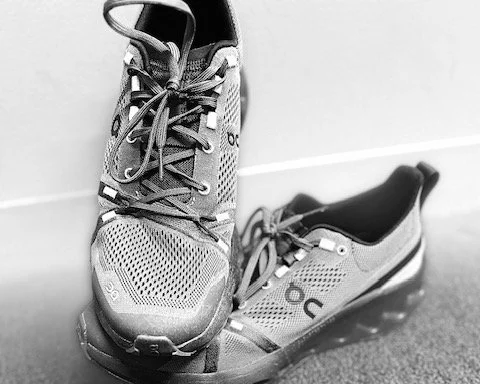3 Keys to prevent running injuries
Nothing ruins a training program for a race like an injury. So much time and preparation are made in ensuring you feel ready for whatever distance your race is. Many people are looking to running as a fun activity that keeps them active and continuing to progress their abilities. If you are looking to run a race or maintain the ability to run year-round here are several keys to ensure an injury doesn’t keep you from your goals.
Volume of runs
As you look at the layout of your weekly mileage, it is crucial to have a gradual increase, as opposed to large weekly spikes. This ensures your body is able to adapt to the mileage increases and prevent overuse injuries from accumulating. Most running related injuries occur due to a large spike in mileage which creates overload to your tendons. A recent study examined runners weekly mileage progressions for a full year and found those who increased their mileage by 30% over a two-week period had a higher rate of injury compared to those who only progressed by 10% [1].
A good rule of thumb is to progress your weekly running mileage by no more than 5-10%. This will assist in a gradual progression of mileage and for your performance to be at its peak. Your body will adjust well to the mileage increases and allow for you to progress for your upcoming racing goals.
Strength training
Running places a high amount of stress on your body. Studies have shown more than 51% of forces are absorbed below the knee joint when distance running. These high forces can jeopardize a race and ability to stay on the roads. One way to prevent an injury from derailing your plans is through a progressive strength program. A recent study found that performing strength training twice a week improves tendon stiffness, increased running economy and shows decreased bone stress forces accumulated while running [2]. Having a stronger body will help in absorbing these forces and allowing you to recover for the next run. When performing strength training it is most beneficial to utilize
Rotating your shoes
What you are running in is just as important as what you are running on. There have been great advances in running shoes over the years. Now they are lightweight and made of harder materials which help your times but still protect your feet. Runners tend to utilize varying heel rise or minimalist shoes depending on their preference. A minimalist shoe places increased running stress on the gastroc and foot intrinsic muscles. Running shoes with a larger heel rise (>4mm) will place more stress through the quadriceps muscle as well as anterior tibialis muscle. Over a training period these increased stresses could create an injury risk if not properly managed. One recent study found that rotating between high-rise and low-rise running shoes during a training cycle will decrease risk of injury by 39% [3]. This allows for proper distribution of forces throughout a training program without an overuse injury occurring.
No one can prevent an injury from occurring but you can take steps in your training to reduce the likelihood it happens.
If you’re currently rehabbing an injury and want to work with a physical therapist that can help you run at a high level again, you can schedule a discovery call here.
We will help you address mobility deficits, improve stability in key areas for runners, teach you how to lift and feel confident in the gym.
References
1. Nielsen RØ, Parner ET, Nohr EA, Sørensen H, Lind M, Rasmussen S. Excessive progression in weekly running distance and risk of running-related injuries: an association which varies according to type of injury. J Orthop Sports Phys Ther. 2014 Oct;44(10):739-47. doi: 10.2519/jospt.2014.5164. Epub 2014 Aug 25. PMID: 25155475.
2. Prieto-González P, Sedlacek J. Effects of Running-Specific Strength Training, Endurance Training, and Concurrent Training on Recreational Endurance Athletes' Performance and Selected Anthropometric Parameters. Int J Environ Res Public Health. 2022 Aug 29;19(17):10773. doi: 10.3390/ijerph191710773. PMID: 36078489; PMCID: PMC9518107.
3. Malisoux L, Ramesh J, Mann R, Seil R, Urhausen A, Theisen D. Can parallel use of different running shoes decrease running-related injury risk? Scand J Med Sci Sports. 2015 Feb;25(1):110-5. doi: 10.1111/sms.12154. Epub 2013 Nov 28. PMID: 24286345.
Why runners need to strength train
It all begins with an idea.
Running is a continually growing sport that provides many benefits ranging from improved overall health and wellness, finding a community that you feel welcomed, and the mental relief you get from going a run and having time to yourself.
These welcomed benefits keep runners wanting to stay…running. One key aspect to ensure that you can stay running is through strength training.
Distance running can place an increased amount of stress and demands on many tissues ranging from the foot all the way up to the hip and lower back. If your body isn’t prepared for these demands, this could lead to potential injury risk and time missing runs. While there may have been some resistance in the community, the science backs the opinion that runners can benefit from strength training and see a return on the investment they make.
Studies have shown that strength training is a great preventative measure to not only prevent injury but improve performance [1]. By having adequate strength in the surrounding muscles that support your joints and bones, you are able to absorb force properly without cumulative stress leading to injuries.
Improved Running Economy: Being able to do more with less energy.
Using a strength and plyometric training program will help in providing proper stiffness in tendons and muscles that are required for running. Having a stronger and stiffer tendon will increase your running performance by improving your running economy. Running economy allows your body to perform at peak condition by optimizing your energy usage. This allows for efficient energy usage thus requiring less energy to what is required. Over time this relates to longer runs and faster speeds [2].
Reduce injury risk:
Studies have shown your joints absorb a high amount of force while running. The calf and lower leg as much as 7 times your bodyweight [3]!
In order to properly handle these high forces occurring at the joint, the surrounding muscles need to be in peak condition to recycle these forces and prevent stress from building. Using a strength program will assist in ensuring your muscles can tolerate load placed on them and be able to have the endurance for whatever your distances are. This helps preserve proper bone density for the duration of your runs and promotes recovery so you are ready for the next session [4].
No one can prevent an injury from occurring but you can take steps in your running and strength training programs to reduce the likelihood it happens. Or improve your recovery timeline it takes for you to bounce back from injury and go back to doing what you love.
Strength training will help you run more efficiently and if you can get more work done with less stress to your body then your ability to handle higher volumes of training will increase dramatically.
If you’re currently rehabbing an injury and want to work with a physical therapist that can help you run at a high level again, you can schedule a discovery call here.
We will help you address mobility deficits, improve stability in key areas for runners, teach you how to lift and feel confident in the gym.
Sources:
1. Prieto-González P, Sedlacek J. Effects of Running-Specific Strength Training, Endurance Training, and Concurrent Training on Recreational Endurance Athletes' Performance and Selected Anthropometric Parameters. Int J Environ Res Public Health. 2022 Aug 29;19(17):10773. doi: 10.3390/ijerph191710773. PMID: 36078489; PMCID: PMC9518107.
2. Llanos-Lagos C, Ramirez-Campillo R, Moran J, Sáez de Villarreal E. Effect of Strength Training Programs in Middle- and Long-Distance Runners' Economy at Different Running Speeds: A Systematic Review with Meta-analysis. Sports Med. 2024 Apr;54(4):895-932. doi: 10.1007/s40279-023-01978-y. Epub 2024 Jan 2. PMID: 38165636; PMCID: PMC11052887.
3. Van Gent RN, Siem D, van Middelkoop M, van Os AG, Bierma-Zeinstra SM, Koes BW. Incidence and determinants of lower extremity running injuries in long distance runners: a systematic review. Br J Sports Med. 2007 Aug;41(8):469-80; discussion 480. doi: 10.1136/bjsm.2006.033548. Epub 2007 May 1. PMID: 17473005; PMCID: PMC2465455.
4. 4. Duplanty AA, Levitt DE, Hill DW, McFarlin BK, DiMarco NM, Vingren JL. Resistance Training Is Associated With Higher Bone Mineral Density Among Young Adult Male Distance Runners Independent of Physiological Factors. J Strength Cond Res. 2018 Jun;32(6):1594-1600. doi: 10.1519/JSC.0000000000002504. PMID: 29470364.




